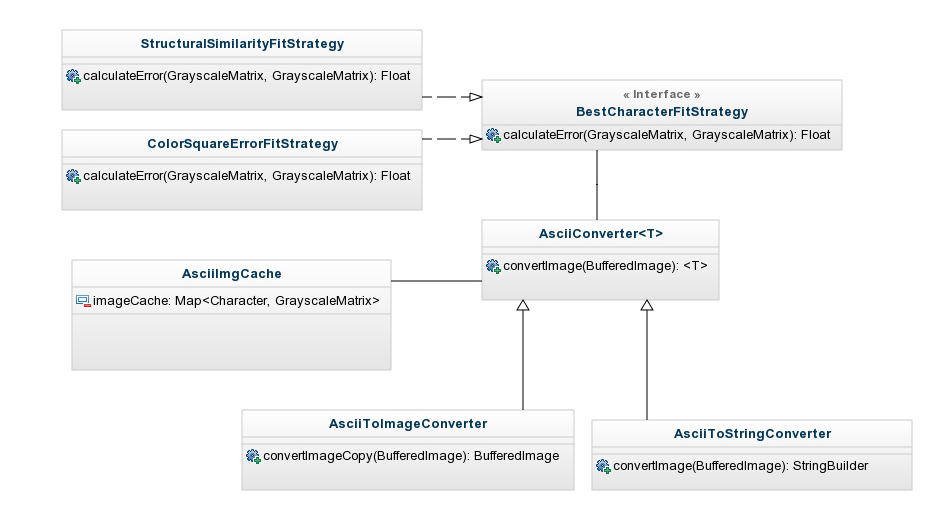Asciimg is an extensible Ascii art generator written in Java. For more info refer to this blog post: http://korhner.github.io/java/image-processing/ascii-art-generator-part-2/
// initialize cache
AsciiImgCache cache = AsciiImgCache.create(new Font("Courier",Font.BOLD, 6));
// load image
BufferedImage portraitImage = ImageIO.read(new File("image.png"));
// initialize converters
AsciiToImageConverter imageConverter =
new AsciiToImageConverter(cache, new ColorSquareErrorFitStrategy());
AsciiToStringConverter stringConverter =
new AsciiToStringConverter(cache, new StructuralSimilarityFitStrategy());
// image output
ImageIO.write(imageConverter.convertImage(portraitImage), "png",
new File("ascii_art.png"));
// string converter, output to console
System.out.println(stringConverter.convertImage(portraitImage));
Here are some sample images generated with various parameters:
16 pts font, MSE
16 pts font, SSIM
10 pts font with 3 characters, MSE
10 pts font with 3 characters, SSIM
6 pts font, MSE
6 pts font, SSIM
Before any ascii art rendering takes place, it is necessary to create an instance of this class. It takes a font and a list of characters to use as parameters and it creates a map of images for every character. There is also a default list of characters if you don't want to bother comming up with your own.
This is the abstraction of the algorithm used for determining how similar a part of the source image with each character is. The implementation should compare two images and return a float error. Each character will be compared and the one that returns the lowest error will be selected. Currently there two implementations available: ColorSquareErrorFitStrategy and StructuralSimilarityFitStrategy.
Very simple to understand, it compares every pixel and calculates Mean squared error.
The structural similarity (SSIM) index algorithm claims to reproduce human perception and its aim is to improve on traditional methods like MSE. Uou can read more on Wikipedia if you want to know more. I experimented a bit with it and implemented a version that seemed to produce the best results for this case.
This is the hearth of the process and it contains all the logic for tiling source image and utilizing concrete implementations for calculating character best fit. However, it doesn't know how to create the concrete ascii art - it needs to be subclassed. There are two implementations currently: AsciiToImageConverter and AsciiToStringConverter - which as you probably guessed, produce image and string output.
